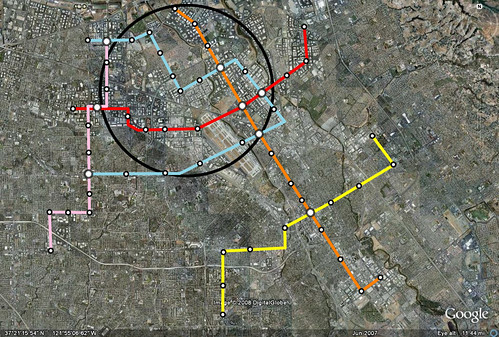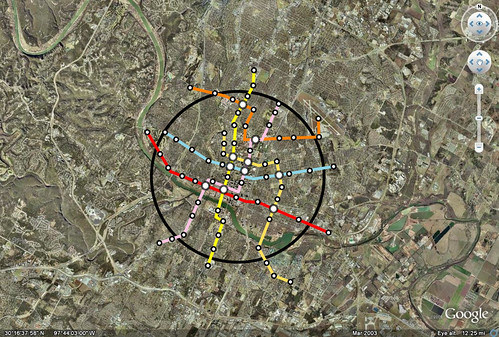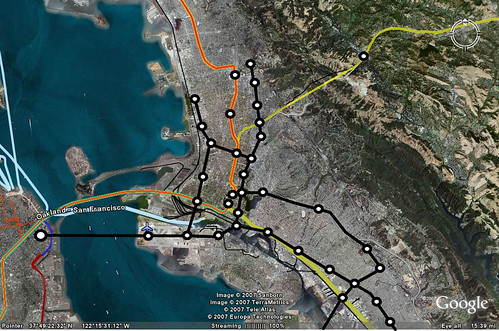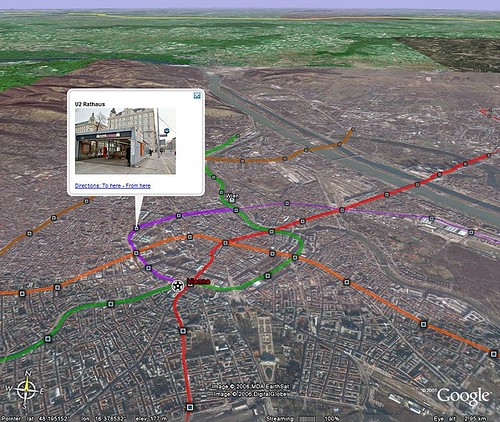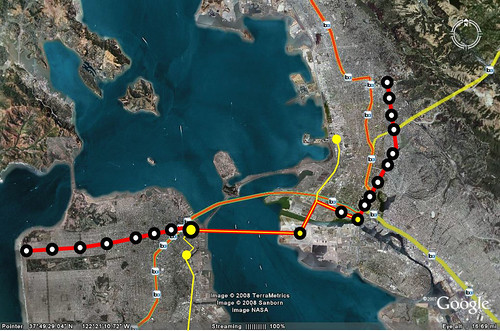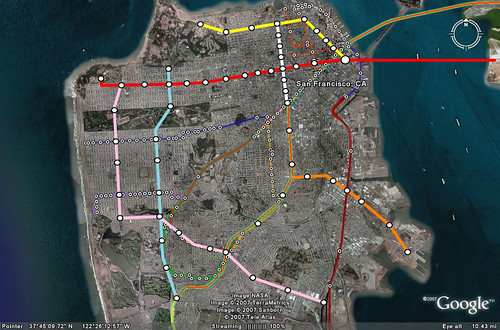After a few posts where people have been wondering about the benefits of electrification, I thought it might be useful to post on here the reasons why electrification is not just an energy argument, but rather an efficiency and operations benefit.
1. Point Source Pollution
It has been revealed in the last few years that higher rates of
respiratory ailments including asthma occur near freeways, especially places like the Port of Oakland where diesel trucks and ships move in and out near the
West Oakland neighborhood. In terms of transit, these emissions occur along a complete corridor. With electric propulsion, it occurs at one source, the power plant. This point source pollution is the issue and in the next 30 years of any project, we have to assume that alternative energy sources will come on line (if they haven't already, San Francisco for example gets electricity from hydro, Calgary is
100% wind) or better scrubbing technology will be available on coal and natural gas plants.
2. Operations Efficiency/Accelerations
Electric drive transit also has faster acceleration and stopping. According to
TCRP report 59, 50% of energy for buses specifically is used for acceleration. Hybrid electric buses are able to capture 25% total through regenerative breaking. This type of system is available for rail systems as well, recently being introduced in Sacramento.
Electric motors also create more torque for faster acceleration. For example, the DART
Kinky Sharyo LRV accelerates at 3 miles per hour per second(mphps). The Colorado railcar DMU
accelerates at 1.44 mphps (1.6 according to
Caltrain specs). Buses typically get
around 1.5 mphps.
Caltrain has put together
a matrix of all the specs for cars they are looking at for the future. DMU is 1.6 mphps, EMU is 2.0-2.5 mphps, the savings by using EMUs over a 15 stop run estimated for Caltrain is
10 minutes every run. That is a big time difference that would allow for more runs every hour. If the run takes about an hour. That means they can have 1o minute headways with 6 vehicles. You would have to add another vehicle with another driver to get the same with diesel.
If you've ever been on a PCC, they have high torque and accelerated at one time at 4 mphps often
tossing patrons to the ground. It was later revised to 3.5 mphps. This is at the expense of top speed, but since they stop more often its not as necessary.
Another benefit is the lighter cars used because of electric motors being lighter which reduces wear and tear on the track as well. The electric motors also have less moving parts meaning they last much longer. The official amortization period for rail vehicles is 24 while buses are 12. However there are still PCC cars still in operation and some rapid transit vehicles like BART are reaching their 40 year mark (they should really be replaced soon though).
3. Energy Conservation
Another issue is energy conservation. In addition to regenerative breaking, there is the power draw during stops and at the end of runs. Commenter NJH mentions that when passing Diridon Station, trains are always idling, wasting energy. Electric vehicles do not need to do this, especially at stops.
Electrification is not that expensive either. Even with copper costing more and more, NJH makes the calculation.
Regarding the price of copper, you have: 3.4$/lb*pi*(0.5cm)^2*mile*9g/((cm)^3)
Definition: 8526.9645 US$
So we're looking at $8.5k/mile for the conductor. Double it, add in connections and throw a bit out for waste. The copper is not going to be a big part of the cost (given that estimates are usually around $1M/mile).
I've heard about $1.5 million per mile is somewhat normal, which is small change when you think about the benefits as mentioned above.





